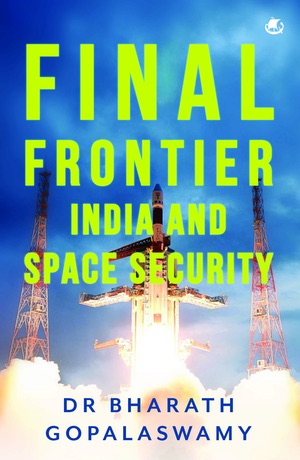Review: Final Frontier: India and Space Securityby Jeff Foust
|
| A 1999 border conflict with Pakistan “revealed the inadequacy of the remote-sensing infrastructure available to the Indian military,” he writes. |
That test is mentioned as part of a broader discussion about India’s growing military space role in Final Frontier: India and Space Security by Bharath Gopalaswamy, a distinguished senior fellow at the Observer Research Foundation in India. The book seeks to place the growing role space assets, from communications to navigation, play in India’s national security, and how that’s led to efforts to protect those systems and be prepared to attack those of other nations.
India’s space program has civilian roots, developed to provide services like communications and remote sensing to aid in the country’s development. Military applications of those satellites came later, using the same satellites ISRO developed for civil services. A turning point, Gopalaswamy argues, was the “Kargil War” in 1999, a border dispute between India and Pakistan that India ultimately won, but only after the deaths of more than 500 Indian soldiers. “The Kargil war revealed the inadequacy of the remote-sensing infrastructure available to the Indian military,” he writes, as Pakistani troops were able to enter Indian territory undetected on the ground. “Consequentially, India launched several satellites compatible with military applications as part of a remote-sensing programme.”
The next turning point, Gopalaswamy argues, was China’s 2007 ASAT test, which prompted a “knee-jerk reaction” by the Indian government. The idea of India developing its own ASAT capabilities predates the test: he notes that, in 2000, an unnamed officer working in the office of the defense minister’s science advisor wrote a report suggesting India could develop an ASAT weapon (a directed-energy system, rather than a missile) by 2010. It’s not clear how influential that report was, but by 2010 a report by the Indian military recommended the development of ASAT capabilities.
The book, though, doesn’t shed much light on exactly how the Indian military developed “Mission Shakti,” its name for the March 2019 ASAT test. Preparations for the test date back to at least 2016, he said, involving both ISRO and India’s Defence Research and Development Organisation. The test leveraged technologies from India’s existing ballistic missile defense program, “which has long been touted as the surest way to develop an effective ASAT capability for India.”
Much of the book is background material: a history of India’s space program, for example, or reviews of the capabilities of the US, Russia, and China in space. Still, Final Frontier: India and Space Security does provide a few insights into the changing nature of India’s space program, reflecting the country’s growing power as well as its growing use of—and dependence on—space assets to support its military. It remains to be seen if Mission Shakti was simply a one-off demonstration of India’s counterspace capabilities as a warning to others, like China, or instead a step towards a more weaponized, and less secure, space environment.
Note: we are temporarily moderating all comments submitted to deal with a surge in spam.
